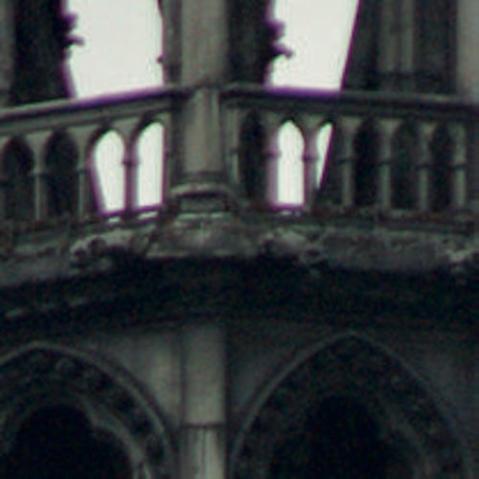Understanding the relationship between aperture, focal length, and depth-of-field
It’s fairly easy to think that all landscape photography demands a small aperture and a huge depth-of-field to get everything in your scene into focus. But in fact, you might not necessarily want everything in your scene to be sharp. Sure, sometimes you will want everything to be tack-sharp, but at others you might want a lot of blur, or just a little blur. Taking photos is about telling stories and you need to be in control of your camera to convey the story you want to tell. In order to do that, you need to understand the relationship between your lenses’ aperture and focal length and the resulting depth-of-field in your photos.

Aperture, focal length, and depth-of-field
The potential depth-of-field from near to far is related to the size of the aperture and the focal length of the lens you’re using. The smaller the aperture opening, the greater the depth of field; the shorter the focal length, the greater the potential depth of field. Therefore, a wide-angle focal length at a small aperture diameter has much greater depth of field than a telephoto lens at the same aperture setting.
Setting aperture for depth-of-field
With the aperture wide open, the only details that will be in sharp focus are those at the specific distance the lens is focused on. Everything closer to the camera and further away from the plane of focus becomes progressively softer the more distant they are from the point of focus.

Nikon D300; 18mm; ISO 400; 1/5 second at ƒ/11
As the aperture is set to a smaller diameter, rays of light from out-of-focus details in the image are channelled into smaller points on the sensor, which affects the apparent sharpness of these details. As the aperture diameter decreases, depth of field increases both in front of and behind the plane of focus. The increase is a geometric progression, with apparent depth-of-field sharpness increasing much more behind the point of focus than in front of it.
Using a depth-of-field preview
If your camera has it, a depth-of-field preview will allow you to see this change in sharpness, but you need plenty of light to see the image clearly in the viewfinder: as the size of the aperture decreases, so the viewfinder image will darken.

Defth-of-field facts
- The smaller the aperture, the greater the depth of field for whatever focal length is being used (ƒ/22 has much greater depth of field than ƒ/5.6, for example).
- The shorter the focal length, the greater the depth of field from near to far at any given aperture. A 20mm lens at ƒ/22 has a potential depth of field extending from about 12″ (30cm) to infinity, while a 35mm lens at the same aperture setting has a potential depth of field of 38″ (96cm) to infinity.
- Depth of field is specific to focal length. For example, a 20mm focal length delivers the same depth of field at a given aperture when used on a point-and-shoot camera, a camera with an APS-C sensor, or a camera with a full-frame sensor.
- The only way to see the depth of field through the viewfinder is to press the depth-of-field preview button, which adjusts the aperture to the current setting. Not all cameras have this option.
101 Top Tips for Landscape Photography is where professional landscape guru Carl Heilman II gives the benefit of a lifetime spent shooting spectacular wilderness and mountain shots, offering a host of targeted tips and tricks that will allow photographers of all abilities to lift their landscape work to the next level. The reader will learn how to harness natural drama, use difficult lighting situations to your advantage and capture unusual perspectives, all the while benefiting from Carl’s clear instruction and beautiful landscape work.
[one_whole boxed=”true”]
 101 Landscape Photography Tips, by Carl Heilman II
101 Landscape Photography Tips, by Carl Heilman II
£7.99 Download the PDF now!
This PDF version retains the styling of the original print book.
RRP for print edition: £14.99
[button color=”Accent-Color” size=”small” url=”https://www.ilexinstant.com/product/101-top-tips-for-digital-landscape-photography/” text=”Digital Edition”] [button color=”Accent-Color” size=”small” url=”http://www.amazon.co.uk/dp/1781579962?tag=ilexpresscom-21&camp=1406&creative=6394&linkCode=as1&creativeASIN=1781579962&adid=08YEA5ARS21G297EPN7K&&ref-refURL=http%3A%2F%2Fwww.ilexinstant.com%2Fproduct%2F101-top-tips-for-digital-landscape-photography%2F” text=”Amazon UK (Print)”]
[button color=”Accent-Color” size=”small” url=”http://www.amazon.com/101-Tips-Digital-Landscape-Photography/dp/1781579962/ref=sr_1_2?ie=UTF8&qid=1399878397&sr=8-2&keywords=carl+heilman” text=”Amazon USA (Print)”]
[/one_whole]


